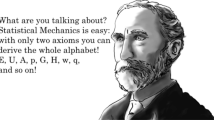Conclusions
The results from our analysis of quasistationary states in real molecules and solid clusters provide us with grounds for stating that the proposed method can be used successfully to predict the number of resonances of form in molecules and to obtain approximate estimates of their characteristics.
In studies in this area at the qualitative level, it is easy to establish the genealogy of the resonances (i.e., from which atomic states they have proceeded) and the effective value of the quantum number ℓ characterizing one resonance or another. In qualitative analysis, the mutual positions of the resonances are indicated approximately; with increasing number of atoms, the inaccuracy increases. Moreover, without carrying out the calculation, it is impossible to estimate the resonance energy, as it is impossible to distinguish reliably between resonances from collective free states of the discrete spectrum and from the rudiments of resonances.
Nonetheless, it is possible to use the proposed method to judge trends in the change of resonances from one compound to another. Particularly valuable, in our view, is the possibility that is offered here for the use of very nearly the entire arsenal of the qualitative LCAO-MO theory.
In order to obtain semiquantitative estimates of the characteristics of resonances, a model with potential wells is applicable. In simple cases, calculations using this model can be performed on a microcalculator.
Similar content being viewed by others
Literature Cited
M. E. Dyatkina, Principles of Molecular Orbital Theory [in Russian], Nauka, Moscow (1975).
V. I. Nefëdov, Zh. Strukt. Khim.,11, 292–298 (1970).
F. A. Gianturco, C. Guidotti, and U. Lamanna, J. Chem. Phys.,57, 840–846 (1972).
A. V. Kondratenko, L. N. Mazalov, and K. M. Neiman, Zh. Strukt. Khim.,20, 203–208 (1979).
Yu. F. Migal', Khim. Fiz.,7, 926–932 (1988).
Yu. F. Migal', “Quasistationary states in many-center systems: The interference appproach,” paper filed at VINITI, No. 2521-V88.
Yu. F. Migal', “Many-center singular solutions in quantum theory of scattering,” paper filed at VINITI, No. 2783-V89.
Yu. F. Migal', “Resonance states and the formation of energy bands in a periodic chain of scattering centers,” paper filed at VINITI, No. 1399-V90.
Yu. F. Migal', “Modeling quasistationary states in diatomic systems,” paper filed at VINITI, No. 1400-V90.
A. I. Baz', Ya. B. Zel'dovich, and A. M. Perelmov, Scattering, Reactions, and Decompositions in Nonrelativistic Quantum Mechanics [in Russian], Nauka, Moscow (1971).
Yu. N. Demkov and V. S. Rudakov, Zh. Éksp. Teor. Fiz.,59, 2035–2047 (1970).
J. L. Dehmer, J. Chem. Phys.,56, 4496–4504 (1972).
R. V. Vedrinskii, A. P. Kovtun, V. V. Kolesnikov, et al., Izv. Akad. Nauk SSSR, Ser. Fiz.,38, 434–439 (1974).
R. V. Vedrinskii and V. L. Kraizman, Zh. Éksp. Teor. Fiz.,38, 434–439 (1974).
Additional information
Rostov Institute of Agricultural Machinery Construction. Translated from Zhurnal Strukturnoi Khimii, Vol. 32, No. 5, pp. 3–8, September–October, 1991.
Rights and permissions
About this article
Cite this article
Migal', Y.F. Formation of quasistationary states in polyatomic systems. J Struct Chem 32, 619–624 (1991). https://doi.org/10.1007/BF00752986
Received:
Issue Date:
DOI: https://doi.org/10.1007/BF00752986




